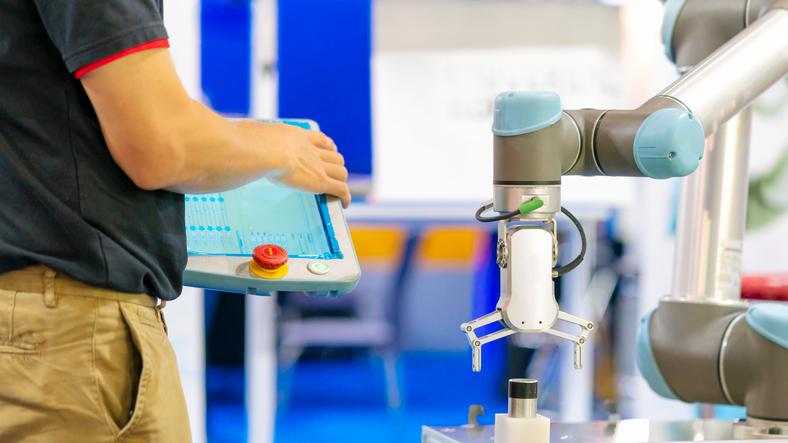Industrial robots and automation have become indispensable for many modern manufacturers. The post-pandemic labor shortage, a desire for higher throughput, continuous improvements in quality, competitiveness, and stronger customer relationships are some of the reasons driving robotic implementation. In plastic injection molding, robotics are used in the molding process, secondary operations, and assembly.
The demand for robots has skyrocketed in recent years. Since the first industrial robotic arm, the Unimate 1900, hit the floor of General Motors in the late 1950s, the technology has undergone significant advancements, and applications have greatly expanded. From 2016 to 2022, global industrial robotics use has increased by 20 percent. Interestingly, the percentage of all units installed in 2022 was only 4% for the entire plastic and chemical products industry. Those needing injection molding services will benefit greatly from finding and working with an injection molder that uses robotics and automation.
What are Industrial Robots?
While there is more than one type of industrial robot, the International Organization for Standardization (ISO) defines an industrial robot as an “automatically controlled, reprogrammable multipurpose manipulator, programmable in three or more axes, which can be either fixed in place or mobile for use in industrial automation applications.”
Two common types of robots used in injection molding processes are cartesian and collaborative robots (cobots).
- Cartesian robots have three linear joints that use the Cartesian coordinate system (X, Y, and Z). They are known for their precise linear movements and are often used for pick-and-place work, assembly operations, and handling machine tools.
- Cobots are designed to work alongside humans in a shared workspace. They are equipped with safety features and sensors to ensure safe collaboration with human workers.
How We Use Them
Industrial robots are used throughout the injection molding and post-molding processes to increase efficiency and quality. At Ensinger, we use cartesian robots on some of our presses to perform a number of operations, such as loading inserts into molds; unloading molds; sorting parts by cavitation; and degating, unscrewing, and other post-mold operations. Our cobots are used on our CNC stations to load and unload parts, reducing human manpower hours by three-fourths and allowing those workers to focus on quality inspections. In addition, custom automation is used in our assembly processes to perform actions such as putting caps on a body and assembling links on a roller chain.
For robot arms to hold and maneuver parts, special fixtures must be manufactured, which can add time to a project. However, we 3D print these fixtures in-house, allowing us to make them quickly and creating an even more efficient process.
Customer Benefits
The manufacturing sector has faced many challenges in the last few years, and injection molding is no different. Even though it has been a few years since the pandemic crippled supply chains and slowed production, the ripples are still being felt. Skyrocketing material costs, worker shortages, record inflation, and rising interest rates are tightening the financial constraints under which injection molders and their customers operate. Injection molders that have invested in robotics and automation show a commitment to maintaining a modern state-of-the-art manufacturing facility and bringing value to their customers.
Increased Efficiency and Reduced Production Time
Unlike their human counterparts, robots can operate continuously without fatigue and breaks, and they don’t get bored and slow their pace. This continuous work, at a consistent speed, leads to higher throughput. Consistent cycle times and precision in operation improve overall process efficiency.
Consistent Quality
Whether the robot is picking and placing a part or performing another task, they are programmed to consistently perform a task or series of tasks without variation. As long as it is programmed correctly, the quality of the part will be the same from the first to the last.
Decreased Costs
Customers see their total costs reduced. Long lead times and quality issues can drive up costs and impact your operations schedule. With robotics and automation, the costs associated with poor quality are eliminated for those operations, and the increased efficiency means projects stay on track. Efficiency gains and reduced waste contribute to long-term cost savings.
Trust Ensinger With Your High Performance Parts
The post-pandemic landscape demands efficiency and precision. Your high-performance plastic parts shouldn’t be stuck in the slow lane. By unleashing the power of industrial robots and automation to streamline our processes, we strive to stay ahead of the curve.
Don’t settle for anything less than a state-of-the-art manufacturing partner. By working with us, you are choosing an injection molder who embraces technology and strives to deliver high-quality parts efficiently. Contact us today to get started with your next project.
